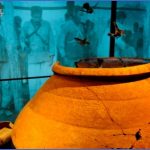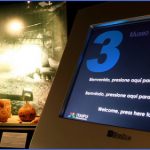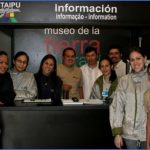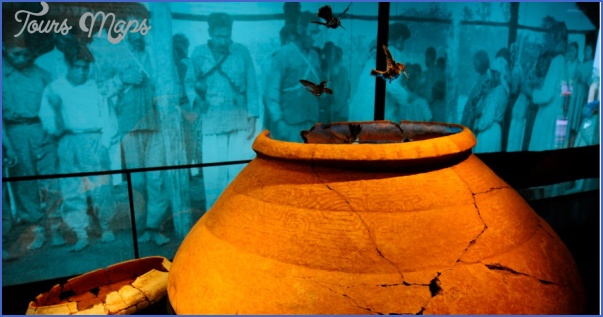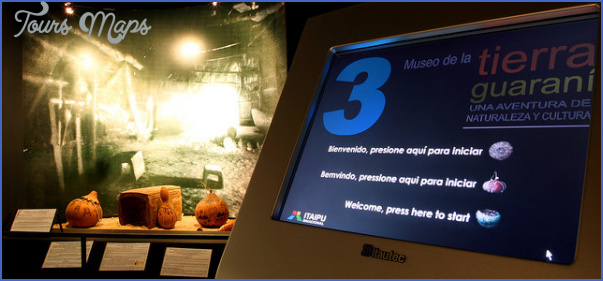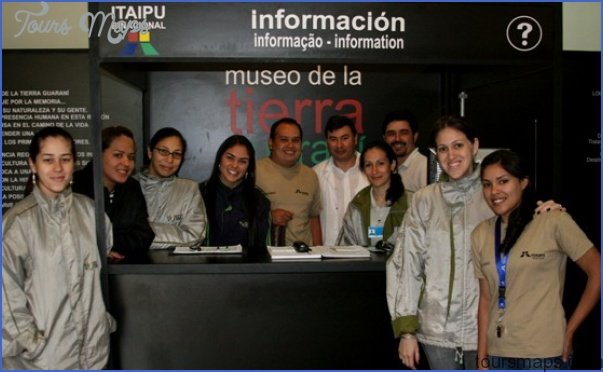The museum and adjoining zoo are the most visited sectors of the Environmental Center. The museum is well designed with displays showcasing the region’s original inhabitants, indigenous as well as fauna. There is a large collection of taxidermied animals representing the fauna native to the dam’s flood zone. Interactive displays bring visitors closer to the indigenous Guarani culture in the second section of the museum Archeological artifacts found in Alto Parana and Canindeyu before the flood are also on display.
In order to mitigate environmental damage resulting in the dam’s construction Itaipu undertook Operation Mymba Kuera (Guarani for animal catching) which, according to Itaipu’s press materials, saved over 36,000 animals from the flood zone. A walk around the zoo’s grounds will bring you in close contact with a number of the flood zone’s natural fauna. Capybaras, tapirs, peccaries and maned wolves have relatively large living areas and can be seen bathing and roaming about. Unfortunately the rarer felines such as jaguars and pumas are confined to extremely small cages which serve to underscore the negative environmental impacts of the hydroelectric plant’s construction. Tel: 061 599 8040, located two kilometers before the Itaipu Dam on the left-hand side of the road (coming from Ciudad del Este), Mon 2:30pm-5:pm (museum only) Tue-Sat 8am-11:30am, 2:30pm-5pm, Sun 8am – 11:30am Nature Reserves
Itaipu’s six nature reserves, totaling 38,000 hectares, are used for scientific research and nature conservation. All are located upriver from the dam along the Parana River. They include: Tati Yupi Biological Reserve (seventeen kilometers to the north of Ciudad del Este), Pikyry Biological Reserve (thirty-three kilometers north), Itabo Biological Reserve (ninety-four kilometers north), Limoy Biological Reserve (174 kilometers north), Carapa Biological Refuge (264 kilometers north), and Mbaracayu Binational Biological Reserve (next to Salto del Guaira, not to be confused with the Rerserva Natural del Bosque Mbaracayu to the east, managed by Fundacion Moises Bertoni). Permission to visit any of the reserves is obtained through the Centro de Recepcion de Visitas. Though all include visitors facilities Tati Yupi is the most readily accessible and geared towards visitors (see the following section). Most are accessible from side roads off the road connecting Ciudad del Este (Route 7) to Salto del Guaira (Route 10). You will need private transportation to get to these reserves. It is best to consult with Itaipu as to the state of access roads as well as facilities for the remaining five reserves as they are rarely visited by tourists.
Museo de la Tierra Guarani & Zoologico Regional Paraguay Photo Gallery
Maybe You Like Them Too
- The Best Cities To Visit in The World
- World’s 10 Best Places To Visit
- Coolest Countries in the World to Visit
- Travel to Santorini, Greece
- Map of Barbados – Holiday in Barbados

